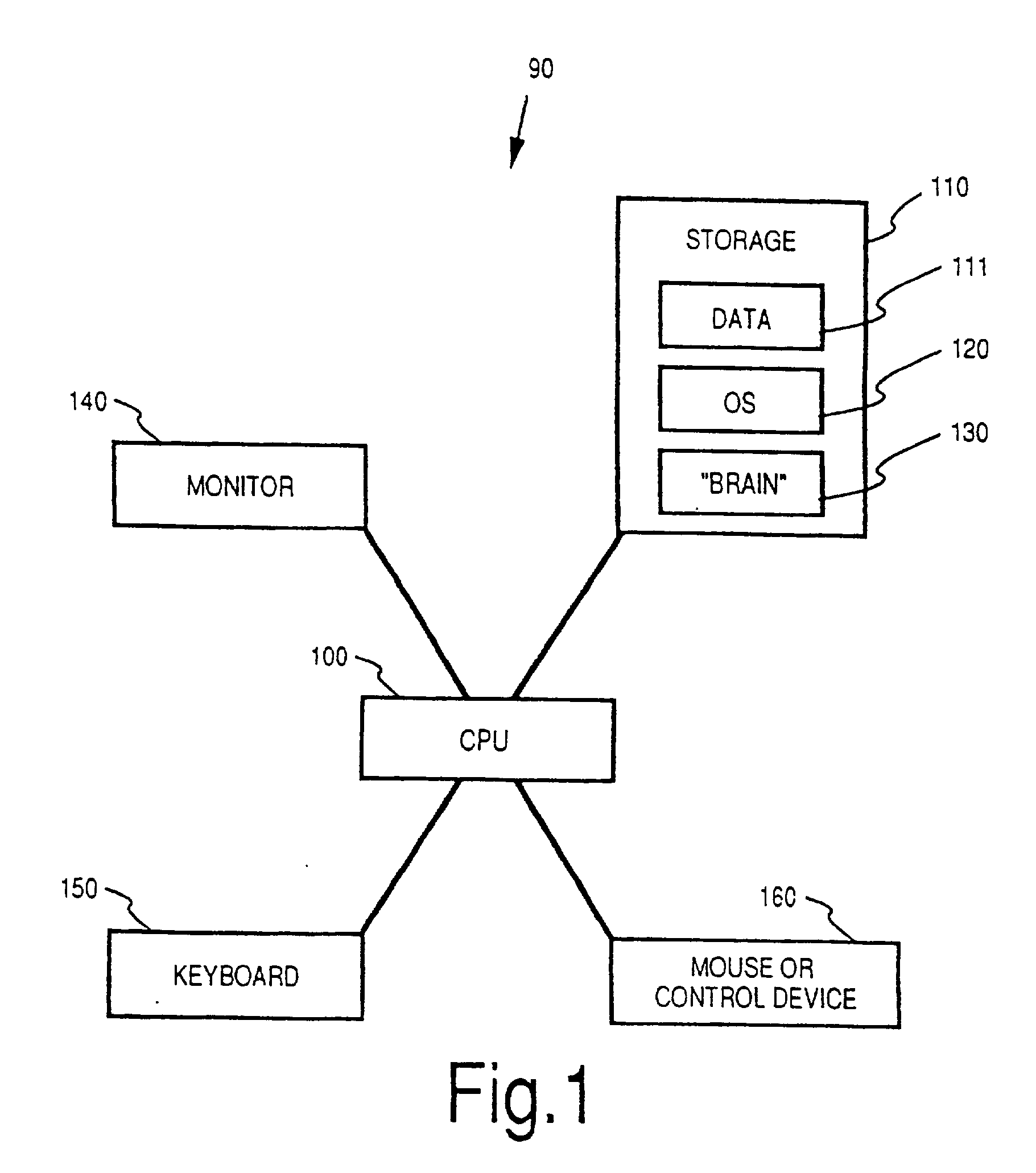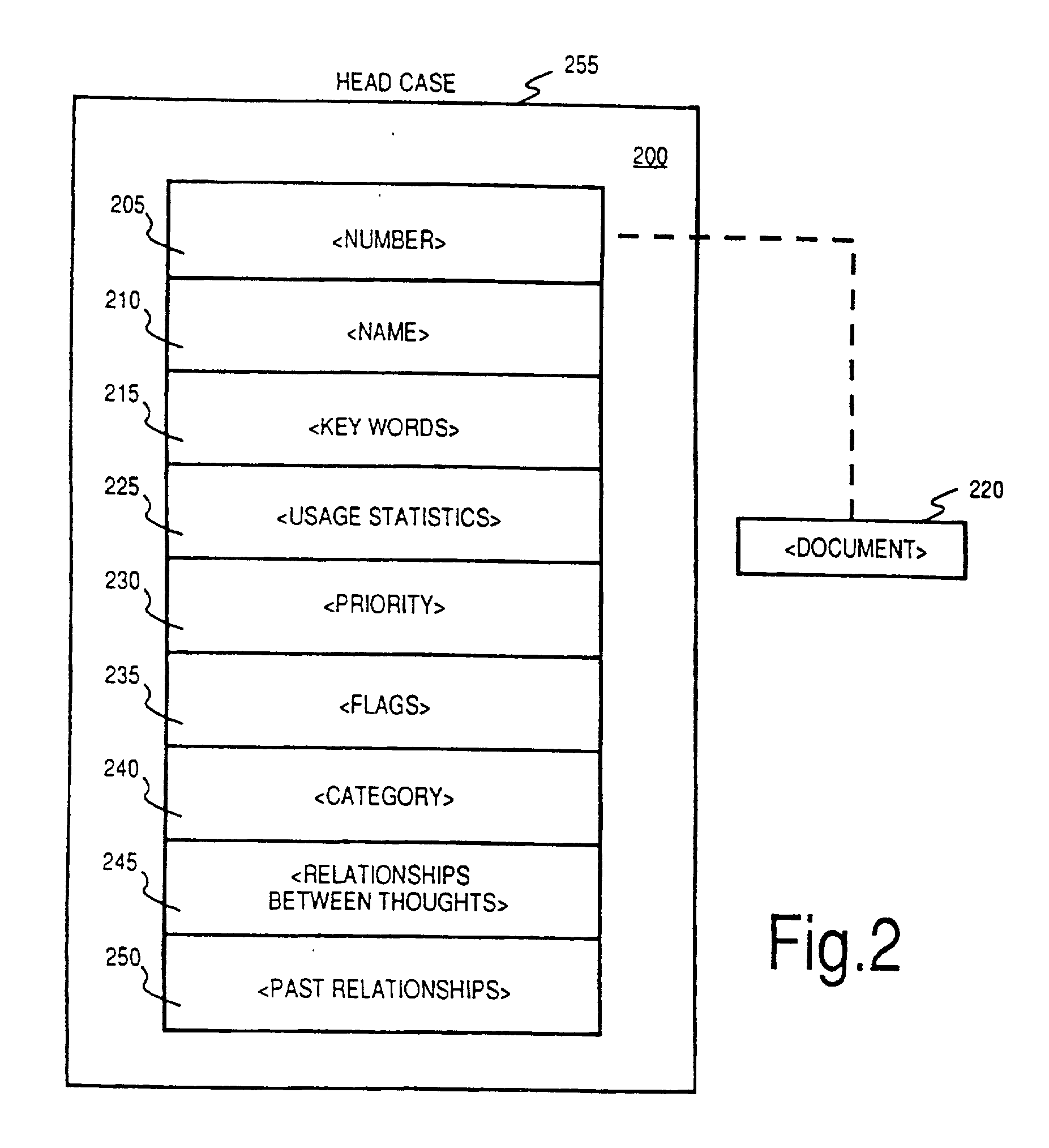Method and apparatus for creating and accessing associative data structures under a shared model of categories, rules, triggers and data relationship permissions
- Summary
- Abstract
- Description
- Claims
- Application Information
AI Technical Summary
Benefits of technology
Problems solved by technology
Method used
Image
Examples
Embodiment Construction
[0116] A. General System Architecture
[0117] FIG. 1 depicts the general architecture of a digital computer system 90 for practicing the present invention. Processor 100 is a standard digital computer microprocessor, such as a CPU of the Intel x86 series. Processor 100 runs system software 120 (such as Microsoft Windows.RTM., Mac OS.RTM. or another graphical operating system for personal computers), which is stored on storage unit 110, e.g., a standard internal fixed disk drive. "Brain" software 130, also stored on storage unit 110, includes computer program code for performing the tasks and steps described below, including the digital representation of matrices, the display of graphical representations of such matrices, and the processing of such matrices in accordance with the principles of the present invention. Display output, including the visual graphical user interface ("GUI") discussed below, is transmitted from processor 100 to an output device such as a video monitor 140 for...
PUM
 Login to View More
Login to View More Abstract
Description
Claims
Application Information
 Login to View More
Login to View More - R&D
- Intellectual Property
- Life Sciences
- Materials
- Tech Scout
- Unparalleled Data Quality
- Higher Quality Content
- 60% Fewer Hallucinations
Browse by: Latest US Patents, China's latest patents, Technical Efficacy Thesaurus, Application Domain, Technology Topic, Popular Technical Reports.
© 2025 PatSnap. All rights reserved.Legal|Privacy policy|Modern Slavery Act Transparency Statement|Sitemap|About US| Contact US: help@patsnap.com



